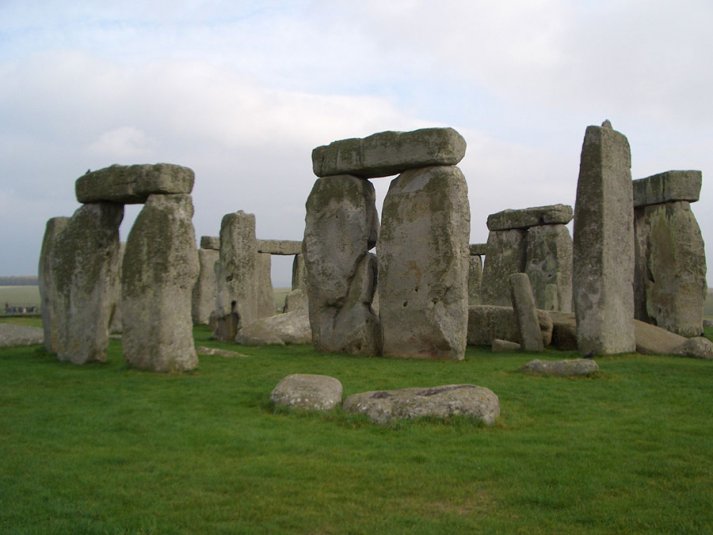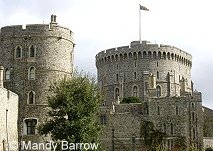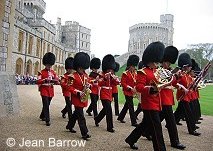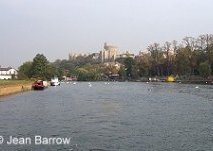Landmarks in England
 Please note: We have mainly written about England, as that is the country within the UK where our students live. We would be very happy for schools and visitors to send us information we can add to our website on famous landmarks in Wales and Scotland.
Please note: We have mainly written about England, as that is the country within the UK where our students live. We would be very happy for schools and visitors to send us information we can add to our website on famous landmarks in Wales and Scotland.
England is a land of ancient cities, royal palaces, massive cathedrals, and legendary sites. Mighty castles, stately homes, glorious gardens, and tiny picturesque villages enhance the natural beauty of the countryside.
Stonehenge
Stonehenge is the most famous prehistoric monument in Britain. It is a circle of stones.
This stone circle is called Stonehenge
People began building Stonehenge about 5, 000 years ago, dragging each stone into place.
Stonehenge is situated on Salisbury Plain in the county of Wiltshire.
Age estimated at 3100 BC
Location Wiltshire, UK
Type of stone Bluestone, Sarson, Welsh Sandstone
Windsor Castle
Windsor Castle has been a royal residence for over 900 years and today is one of the homes of Queen Elizabeth ll. The royal standard flies from the round tower of the Castle when the Queen is in residence.

Windsor Castle has dominated the river Thames for over 900 years. It was built by the Normans from timber and later rebuilt in stone.
Hadrians Wall
Hadrian's Wall, a stone wall barrier built to separate the Romans and the Picts tribes in Scotland 2000 years ago. It allowed Roman soldiers to control the movements of people coming into or leaving Roman Britain. It was so well built that you can still see parts of it today.
Kings College, Cambridge
King’s College, founded in 1441 by Henry VI, is a constituent college of the University of Cambridge. The chapel, is home to the world-famous Choir.
The White Cliffs of Dover
The White Cliffs of Dover are truly one of the most famous English landmarks. These distinctive cliffs have been a welcoming site for returning sailors through the many centuries. (Famous song)
Blackpool Tower
Blackpool Tower is a tourist attraction in Blackpool, Lancashire in England which was opened to the public on 14 May 1894. It is said to be the most famous seaside landmark in England.
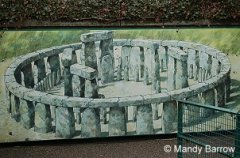 London Landmarks
London Landmarks
Buckingham Palace
The Palace of Westminster
The Palace of Westminster, known also as the Houses of Parliament, is where the two Houses of the Parliament of the United Kingdom (the House of Lords and the House of Commons) conduct their sittings. The Palace lies on the north bank of the River Thames in the London borough of the City of Westminster.
Tower of London
The Tower, or Bloody Tower as it is known, has been host to many famous executions and imprisonments, including those of Anne Boleyn, Catherine Howard, Lady Jane Grey and Sir Walter Raleigh. The Jewel House, which houses the Crown Jewels, lies within the confines of the Tower of London.
The London Eye
The London Eye, next to County Hall, is another of London’s most modern landmarks. It is the world’s biggest ferris wheel, and will carry 800 passengers at a time on a thirty-minute ride. From its highest point of 450 feet, it promises views of up to 25 miles.
St Paul's Cathedral
The dome of St Paul's Cathedral is the second biggest dome in the world, after St Peter's in Rome.
The first St Paul's Cathedral was built in 604 AD but burnt down in 675. The rebuilt cathedral was again burnt down in the Great Fire of London in 1666.
On 2nd September, 1666, the Great Fire of London destroyed a large area of the city including St. Paul's Cathedral. Sir Christopher Wren was given the task of designing and rebuilding St. Paul's - a task that was to take him thirty-five years to complete. The most dramatic aspect of St. Paul's was its great dome. It was the second largest dome ever built (the largest was St. Peter's Basilica in Rome).
